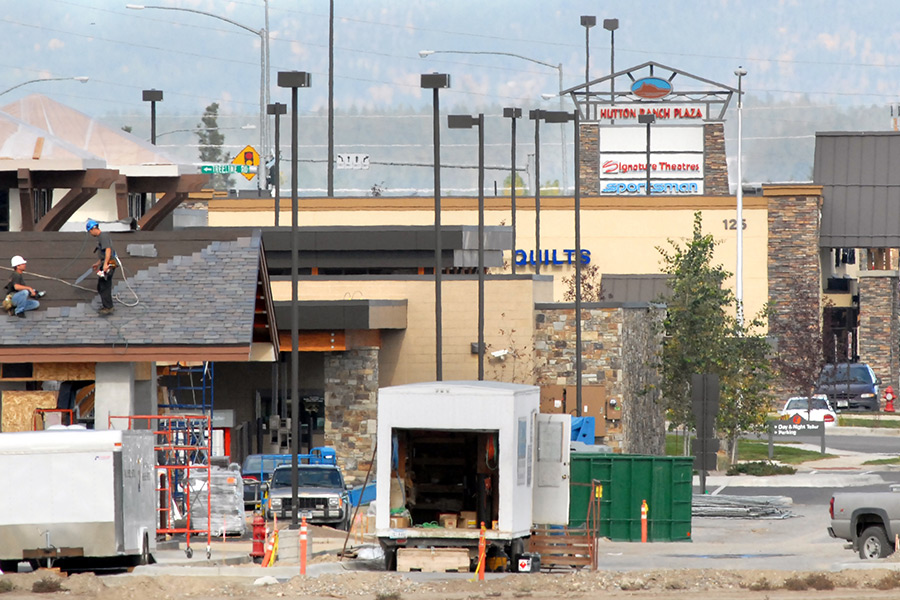Montana ranks in the top five states for employment growth and continues to outpace the national recovery, but the state faces slower growth in the future as an aging workforce retires, according to a new economic report released last week.
The Department of Labor and Industry’s annual Labor Day report released Aug. 29 shows that about 12,000 jobs have been added in the state so far this year. Montana Labor and Industry Commissioner Pam Bucy says that number puts the state on pace for record-breaking employment growth this year.
“It truly is a great time to live, work, and raise a family under Montana’s big sky,” Bucy said.
The report also says the unemployment rate has dropped steadily since 2010. Currently at 4.6 percent, it’s the 11th lowest in the nation. Montana’s economy is expected to continue above average employment growth of 1.7 percent in 2014 and 2015.
Businesses will need to make investments so workers can increase their productivity, the report says, in order to counteract worker shortages and slower job growth after 2015.
Job growth is expected to slow due to worker shortages caused by the retirements of Montana’s aging workforce. About 27 percent of Montana’s workforce, or 137,000 people, is 55 or older. The group of young workers aged 16 to 24 — estimated to be 113,000 across the state — is simply not big enough to accommodate the retirements, analysts say.
Bucy said the state would continue to focus on increasing educational and training opportunities to help train a new generation of workers.
“We’re committed to continuing our work with the private sector to ensure we’re supporting business, job, and wage growth in every corner of our state,” she said.
Northwest Montana is still lagging behind in terms of overall gains compared to other portions of the state. This corner of the state was hit hardest by the recession, with construction and manufacturing jobs significantly dropping.
All of the state’s industries have added jobs over the last year except government, according to the latest jobs report. Leisure activities, trade and transportation, and health care have added the most jobs, but the mining industry has been growing at the fastest rate. The mining and transportation growth is related to the Bakken oilfield development on the eastern portion of the state.
Most jobs being added in Montana during the recovery appear to be full-time, as the average hours of work has been increasing throughout the state. Multiple jobholding in Montana is on the decline, according to labor statistics.
Unemployed workers are experiencing shorter unemployment periods, a sign of more job opportunities and a stronger labor market. Workers receiving UI benefits in the first six months of the year received benefits for 17.1 weeks on average in 2014 compared to 17.5 weeks in 2013.
Overall, Montana’s personal income growth has outpaced the U.S. over the last five years. Montana had the 13th fastest personal income growth among states over the last year, and had the sixth fastest personal income growth among states over the last five years.
The state’s GDP expanded by 4.5 percent in 2013, ranking it as the 13th fastest growing state.
Montana ranks 12th among states for the highest rate of net business openings, and fourth in the nation for the percent of households that own a business, suggesting that Montana is continuing to be a good place for entrepreneurs.
Montana’s average wage growth has been outpacing the national average and most other states.
Most of Montana’s reservation communities also experienced lower unemployment rates in 2013 than in years past. Unemployment dropped significantly over the year on the Fort Peck Reservation, down 4.8 percentage points to 4.6 percent, and Flathead Reservation, down 1.2 percentage points to 9.6 percent. Three reservations faced increases to their unemployment rates over the year, including the Blackfeet Reservation, which increased 0.8 percentage points to 15 percent unemployment.
Another lingering challenge in Montana’s future is to reduce the number of workers who are long-term unemployed. Long-term unemployed workers are of particular concern because finding a job gets harder the longer a person is unemployed.
The Labor Day Report, which is presented annually by the Montana Department of Labor & Industry, provides a detailed look at the economic performance of our state as measured by key indicators important specifically to Montana workers, such as unemployment and personal income growth. To view it, visit http://ourfactsyourfuture.org/.
The report concludes, “With a strong and improving economy, a well-educated and trained workforce, and investments in our state by businesses, Montana should continue to outperform the nation in our economic growth, strengthening our economy and making Montana and even better place to live and do business.”
